A Buddhist Monuments and Cultural Landscape-Chiang Mai Thailand
Chiang Mai Thailand
Chiang Mai is one of the most popular destinations in Thailand, known for its Mountain, hill tribes, lush rainforests, elephant sanctuaries, and interesting cuisine. Founded in 1296, it was the capital of the independent Lanna Kingdom until 1558. Chiang Mai Old City area still retains vestiges of walls and moats from its history that are a symbol of the cultural and religious center. Chiang Mai is most famous for its beautiful ancient temples, there are over 300 Buddhist temples to visit in Chiang Mai. Apart from this, there is much more to see and do, Its striking mountainous landscape around the city provides a lot of wonderful natural attractions. The city of Chiang Mai Thailand offers a near-perfect blend of pace, affordability, comfort, culture, and nature.
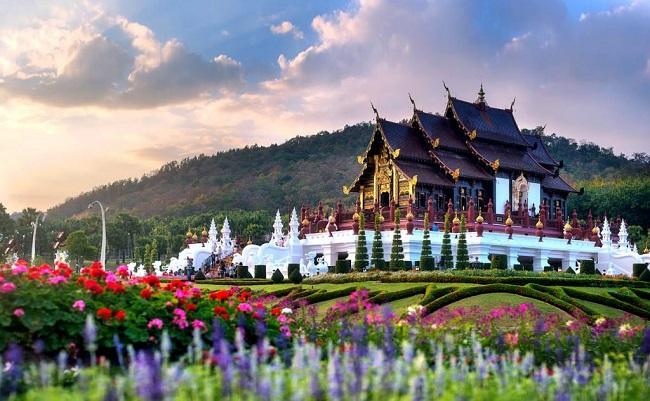
History Chiang Mai
Chiang Mai or Chiengmai is the capital of Chiang Mai province and the second largest city in Thailand. It is 700 km north of Bangkok in a mountainous region called the Thai highlands. Chiang Mai Thailand was founded in 1296 by Mangrai as the new capital of Lan Na. The city’s location on the Ping River and its proximity to major trading routes contributed to its historic importance. Pha Yu enlarged and fortified the city. The city was surrounded by a moat and a defensive wall since the nearby Taungoo Dynasty of the Bamar people was a constant threat. It is the armies of the Mongol Empire, which decades earlier had conquered most of Yunnan, China. In 2015, Chiang Mai was on the tentative list for UNESCO World Heritage inscription.
Chiang Mai Weather
Chiang Mai has a tropical savanna climate with warm to hot weather year-round, though nighttime conditions during the dry season can be cool and much lower than daytime highs. The maximum temperature ever recorded was 42.4 °C in May 2005. Chiang Mai Map shows popular attractions near the city.
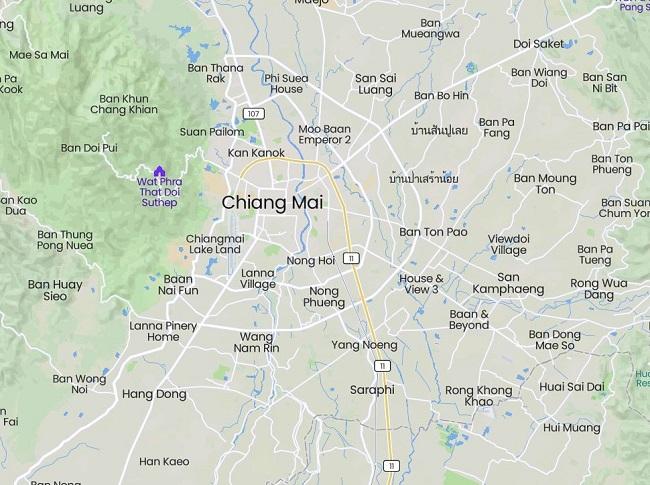
Best things to do in Chiang Mai
Visiting some of the city’s beautiful temples and Other unique attractions is the best thing to do in Chiang Mai. The historical capital of the old Lanna Kingdom, an Old City- hosts most of the best temples, museums, and other interesting sites. A little further afield, visitors will find that Chiang Mai Thailand is ringed with outstanding, attractions to see and things to do. Thailand’s tallest mountain, two different tribal villages, and various national parks are worth visiting. Check out the best attractions in Chiang Mai to make sure that you don’t miss the most important sites and experiences in Chiang Mai city.
Attraction in Chiang Mai
Wat Phra That Doi Suthep
Wat Phra That Doi Suthep is one of northern Thailand’s most sacred temples, It is a beautiful example of northern Thai architecture. The temple is reached via a 306-step staircase flanked by Naga (mythical sea serpents). The monastery was established in 1383 by King Keu Naone to enshrine a piece of bone. The Bone is said to be from the shoulder of the Buddha. The bone shard was brought to Lanna by a wandering monk from Sukhothai. The terrace at the top of the steps is dotted with breadfruit trees, rock gardens, and monuments, including a statue of the white elephant.
Read More- A Mysterious Hole in Basaltic shoreline-Thor’s Well Oregon
Wat Chedi Luang
Wat Chedi Luang known for the ruined Lanna-style chedi (1441) is taller and sprawls around the stupa. The famed Phra Kaew (Emerald Buddha), now held in Bangkok’s Wat Phra Kaew, resided in the eastern niche until 1475. The base of the stupa has 5 elephant sculptures on the southern face. The elephant on the far right is the original brick and stucco.
This was possibly the largest structure in ancient Chiang Mai, but the top of the chedi was destroyed by either a 16th-century earthquake or by cannon fire during the recapture of Chiang Mai from the Burmese in 1775. Like most of the ancient monuments in Chiang Mai, Chedi Luang was in ruins when the city began its modern renaissance. Unesco and the Thai government in the 1990s stabilized the monument and prevented further degradation.
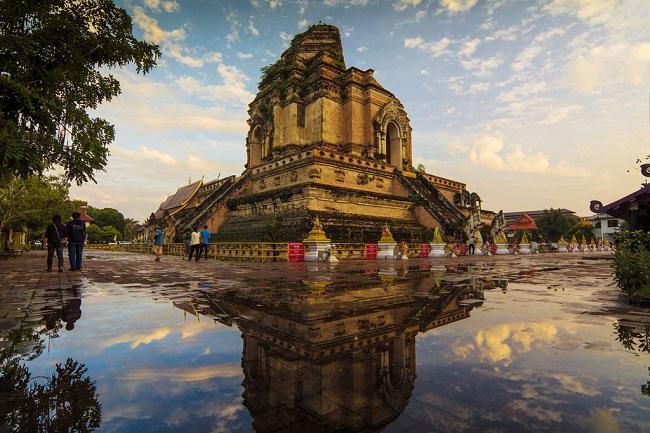
Wat Phra Sing
Wat Phra Sing is dominated by an enormous, mosaic-inlaid. Pilgrims flock here to see the famous Buddha statue known as Phra Sing (Lion Buddha), housed in Wihan Lai Kham, a small chapel south of the chedi (stupa) to the rear of the temple grounds. This elegant idol is said to have come to Thailand from Sri Lanka and was enshrined in 1367. The chapel is similarly striking, with gilded Naga (serpent) gables inside.
Talat Warorot
Chiang Mai’s oldest public market, Warorot is a great place to connect with the city’s soul. Visitors will find numerous stalls selling items for ordinary Thai households- Toys, fishing nets, pickled tea leaves, wigs, sticky-rice steamers, Thai-style sausages, and live catfish. Tourists can easily spend half a day wandering the covered walkways, watching locals browsing, and haggling for goods. Adjacent to Talat Warorot is Talat Ton Lam Yai, the city’s main flower market, and to the south, markets are full of ‘wet and dry’ foodstuffs, fabric vendors, Chinese goldsmiths, and apparel stalls.
Wat Phan Tao
Wat Phan Tao monastery is a monument to the teak trade, with an enormous prayer hall supported by 28 gargantuan teak pillars, enshrining a particularly graceful gold Buddha image. Near the Monument is a striking image of a peacock over a dog, representing the astrological year of the former royal resident’s birth. The monastery is famous for the Visakha Bucha festival in May or June when monks light hundreds of butter lamps around the pond on the grounds.
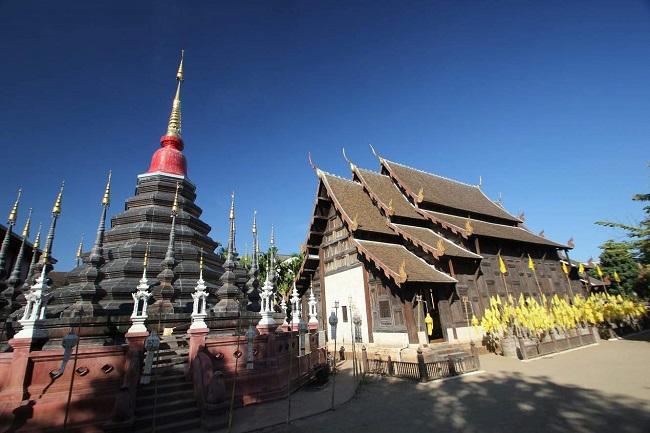
Wat Pha Lat
Wat Pha Lat is a hidden temple in Jungle tucked into the mountain along the way to Wat Phra That Doi Suthep. Old stone structures, intricate carvings, Naga-flanked stairways, and Buddhist statues dot the serene grounds are worth seeing. A walkway over a sheetrock waterfall affords postcard-pretty views of Chiang Mai. As the story of the temple goes, in 1355, The king ordered temples constructed in the hidden jungles to become a rest stop for monks making the pilgrimage to the larger, more opulent temple.
Wiang Kum Kam
Wiang Kum Kam served as the Lanna capital for 10 years from 1286. The city was abandoned in the 16th century due to flooding. The excavated ruins are scattered around the winding lanes of a sleepy village 5km south of Chiang Mai Thailand.
The landmark monument of the ruins is Wat Chedi Liam, with a soaring stucco chedi divided into dozens of Buddha statues, an architectural equivalent to India’s famous Mahabodhi Temple. Over 1300 inscribed stone slabs, bricks, bells, and chedi have been excavated at the site and some pieces are displayed at the visitor’s center.
Doi Suthep-Pui National Park
Sultry Doi Suthep (1676m) and Doi Pui (1685m) are two of northern Thailand’s most sacred mountains and are known as the crown of clouds. A dense forest envelops the twin summits. The forest consists of a 265-sq-km area on the slopes of the mountains and is preserved as a national park. The site attracts a number of nature lovers and legions of pilgrims who come to worship at Wat Phra That Doi Suthep.
As visitors can climb, the lowland rainforest area is full of mosses and ferns, providing a haven for more than 300 bird species and 2000 species of ferns and flowering plants. The park is also the best destination for mountain biking, along trails that were once used as hunting and trade routes by hill-tribe villagers.
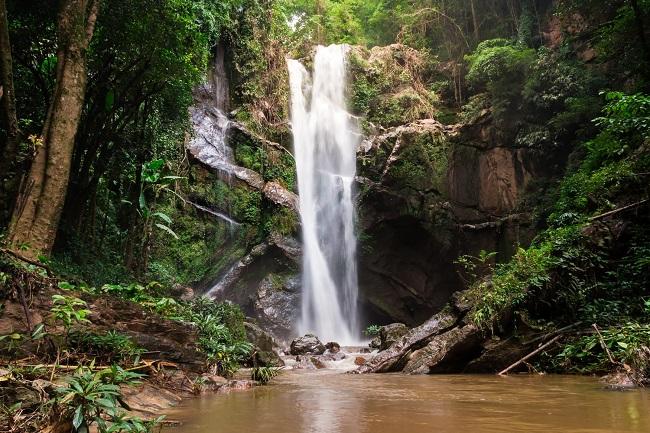
The park accommodation a comfortable base to explore and a trail run for 2km from the campground to the summit of Doi Suthep. The national park Doi Suthep is blessed with many thundering waterfalls, including Nam Tok Monthathon. It is 2.5 km off the paved road, and there is a series of pools that hold water year-round. Swimming is the best activity here after the monsoon.
How to reach Chiang Mai
Chiang Mai is one of the largest cities in northern Thailand. Visitors can easily reach the city of Chiang Mai by air, rail, or bus. The nearest Chiang Mai International Airport is connected with many domestic and international airlines. One can also travel by Express Trains or Sleeper Trains which depart from Hua Lamphong Station in Bangkok.
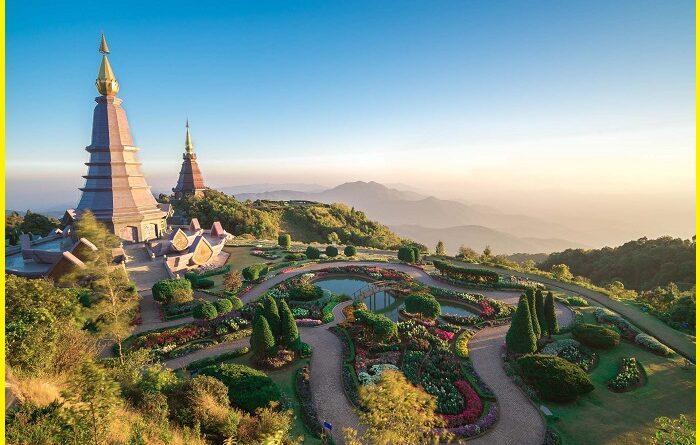
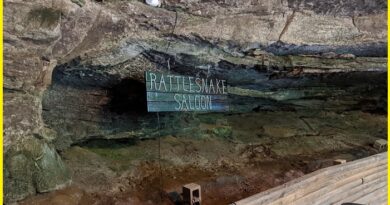
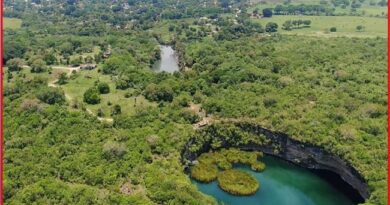

Pingback: What makes PHANG NGA BAY THAILAND A stunning destination, Know here - Geotourism